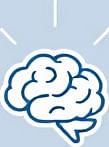Automating Daily Tasks to Ease Mental Overload
 by Verner Mayer
by Verner Mayer
Discover how automating routine tasks can lighten cognitive load, offering practical strategies for students and professionals to boost focus and productivity in daily life. Learn simple tools and methods to reclaim mental energy.

In our busy lives, the constant stream of tasks can weigh heavily on the mind, making it hard to stay focused and effective. Cognitive load offloading through automation provides a way to handle this by letting technology manage repetitive activities. This approach allows individuals to dedicate more energy to what truly matters.
One key benefit of automation is its ability to simplify routines. For instance, setting up automatic reminders for bills or appointments means less time spent remembering details. This shift helps reduce the mental effort required for everyday planning, leading to clearer thinking.
To get started, consider using apps that organize schedules. Many free tools exist that can sync calendars and send notifications without manual input. By integrating these into daily habits, students can ensure assignments are tracked, freeing up space for learning and creativity.
Professionals often face a barrage of emails and meetings. Cognitive load can build up from constant monitoring, but email filters and auto-responders offer relief. These features sort incoming messages and handle routine replies, allowing for deeper work on projects.
Another area for improvement is household management. Shopping lists and meal planning can be automated with apps that track inventory and suggest recipes based on what's available. This method cuts down on decision fatigue, especially during evenings when energy is low.
Practical Tips for Implementation
Here are some straightforward steps to incorporate automation:
-
Start with small tasks: Begin by automating one activity, like setting up a phone app to track fitness goals. This builds confidence and shows quick results.
-
Explore device features: Most smartphones have built-in options for routine actions, such as voice commands for controlling lights or alarms. These require minimal setup and can handle multiple tasks at once.
-
Use integration tools: Connect different apps so they work together seamlessly. For example, link a note-taking app with a calendar to update deadlines automatically, reducing the need for manual checks.
-
Monitor and adjust: After implementing changes, review what's working. If an automated system isn't helping, tweak it to better fit personal needs.
For students, automation can transform study routines. Digital tools that organize notes and highlight key concepts make revision easier. By offloading the organization of materials, learners can focus more on productivity and grasping new ideas.
In professional settings, workflow automation tools can manage reports and data entry. This not only saves time but also minimizes errors from manual handling, leading to smoother operations.
Real-Life Examples
Take Sarah, a university student who used automation to handle her reading list. By setting up a digital library that sends daily reading suggestions, she reduced the stress of keeping track of assignments. This allowed her to concentrate on content rather than logistics.
Similarly, Alex, a project manager, automated his task assignments through a team platform. Emails about updates were handled automatically, giving him more time for strategic planning and team interactions.
The beauty of these strategies lies in their adaptability. Whether you're a parent juggling family duties or a freelancer managing clients, automation scales to fit various lifestyles. It encourages a balanced approach, where technology supports human capabilities without overwhelming them.
Over time, consistent use of these methods can lead to lasting changes. People often report feeling less scattered and more in control, which enhances overall well-being. By prioritizing automation in daily life, it's possible to create space for relaxation and personal growth.
In closing, embracing automation for daily tasks is a step toward lighter mental burdens. With these tips, anyone can begin reducing overload and enjoying a more efficient routine.
